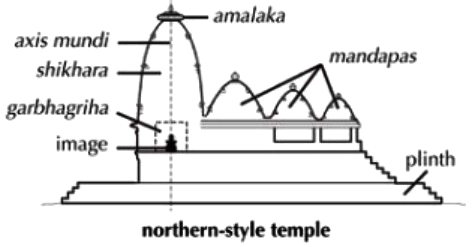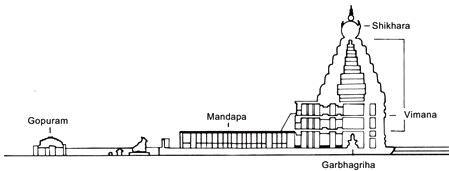Devayatanam: Conference on Temple Architecture | 26 Feb 2022
For Prelims: World Heritage site, Vesara, Nagara & Dravidian architecture.
For Mains: Indian Heritage & Culture, Temple Architecture.
Why in News?
Recently, the Union Culture Minister inaugurated Devayatanam, a one-of-a-kind conference on temple architecture of India, at Hampi, Karnataka.
- It is a part of the celebration under Azadi Ka Amrit Mahotsav and is being organized on 25th-26th February by the Archaeological Survey of India (ASI) of the Ministry of Culture.
- The temples of Hampi are already featured in the World Heritage List of UNESCO for their Sheer brilliance, Scale of imagination, and Scintillating architecture.
- Approximately 10 of India’s 40 UNESCO World Heritage Inscriptions are Hindu Temples in different architectural styles, patterns and symmetry.
- In 2021, Rudreswara Temple, (also known as the Ramappa Temple) at Mulugu district, Telangana has been inscribed on UNESCO's World Heritage list.
What is the Significance of the Conference?
- The conference provides a platform to discuss, deliberate and disseminate to the world the grandeur of Indian temples, art and architecture.
- This was in line with the overall vision of the Prime Minister which is based on 5 V's, i. e. Vikas (development), Virasat (heritage), Vishwas (trust), Vignan (knowledge), which lead us to becoming a vishwaguru so that India shows the world the way.
- Devayatnam, the house of god is not only a place to worship and perform rituals but also a centre for education, fine arts, music, science & technology, rituals & traditions or activities shaping the society.
How Has the Government Promoted Temple in Recent Times?
- The Union Government has proposed Hoysala temples of Belur and Somnathpur to the UNESCO World Heritage List.
- A grand temple of Lord Ram that is being built in Ayodhya.
- After close to 250 years, the spiritual capital of India - Kashi, has been rejuvenated and has more accessibility with amenities and better infrastructure for devotees.
- The state of Telangana has built 2 large stone carved temples worth Rs. 1,000 crores.
- The focus is to make existing spiritual places accessible to devotees through better infrastructure and world class amenities.
- PRASHAD and SWADESH DARSHAN Scheme to facilitate tourism infrastructure and provide better accessibility and experience at spiritual places with a budget of approximately Rs. 7,000 crores has been conceived.
What is the Significance of Indian Temples?
- Temples have been centres of Indian art, knowledge, culture, spirituality, innovation and education.
- There have been three major styles of setting up temples in India known as Nagara, Dravidian and Vesara.
- Dashavatar temple in Devgarh is of Nagara style which is prevalent between the Himalayas and the Vindhya mountains.
- The Kailasanathar temple in Kanchi is a Dravidian style temple, developed on the land of Krishna and Kaveri River.
- Papanatha temple is one of the examples of Vesara style. Vesara is a hybrid form Nagara and Dravidian style.
- A Hindu temple is a combination of art and science which includes Shilpa sastra, vasthu sastra, geometry and symmetry.
- The temples promote unity, integrity, and civilization.
- It was during the freedom struggle that all the freedom struggles were resolved before temple fire to fight for freedom of the country.


